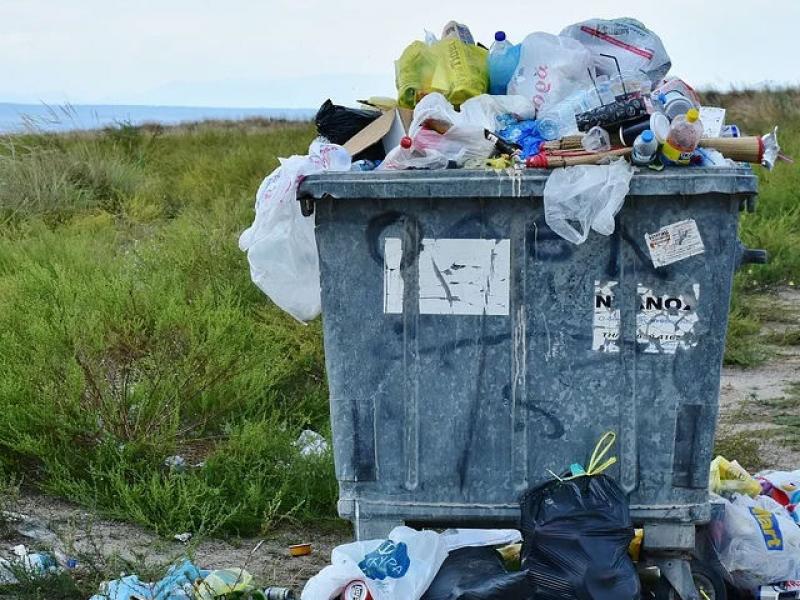
In 2017, the amounts of waste generated in the manufacturing and electricity industries amounted to 3.9 million tonnes, an increase of 14% compared to 2014. However, the amount of waste recycled amounted to 2.9 million tonnes, and 75% of the total waste in the manufacturing and electricity industries remained, similar to 2014. , According to the 2017 CBS Environmental Survey.
In 2017, approximately 20,000 tonnes of greenhouse gases were emitted in the manufacturing and electricity sectors, which account for about 31% of total greenhouse gas emissions as a result of fuel combustion, and this year only 6% - 4% of companies in the manufacturing and electricity sectors undertook various energy control operations (energy surveys, Appointment of Energy Supervisor and Energy Management Systems). Improvements made to increasing energy efficiency included the replacement of lighting systems (27.4%), motors (7.6%) and air conditioning systems for cooling and heating (4.7%). At the same time, there was a slight decrease in the amount of sulfur dioxide emissions.
The amount of industrial waste per capita in manufacturing in Israel was 292 kg, an increase of 9% from 2014. The EU average in 2016 was 636 kg per capita. The waste generated contains about 2.3 million tonnes of dry waste generated in construction and demolition operations, earthen waste and contains no organic waste, and approximately 1.4 million tonnes of mixed waste containing food, packaging, plastic or trash residues, plus about 0.2 million tonnes of hazardous waste. 71% of all waste generated in manufacturing and electricity, comes from electricity, gas, steam and air conditioning (24%), non-metallic minerals (23%) and food, beverage and tobacco manufacturing (14).
In all industries, electricity and electricity were shipped in 2017 with approximately 820,000 tonnes of mixed waste, of which approximately 350,000 tonnes of organic matter, 140,000 tonnes of ferrous metals and 130,000 tonnes of cardboard. The materials with high percentages of recycling were: non-ferrous metals (91%) and cardboard (83%), while the lowest percentages were recorded in plastic (27%). The highest recycling rate was in dry waste 88%, mixed waste was 62% and hazardous waste - 16%
The survey examined energy consumption (fuels and electricity) and selected greenhouse gas emissions and selected air pollutants from natural gas-based fuel combustion - petroleum products (heavy and light), diesel (for industry and transport), liquefied hydrocarbon gas, gasoline and kerosene. No other fuels such as coal and oil shale were included in the survey. Since the previous survey was conducted, there has been a change in the fuel mix as natural gas has become more available and the use of fuel oil and diesel has been reduced.
Total energy consumption (the fuels listed above and electricity) amounted to 9,279 thousand shekels (equivalent to tons of oil). Approximately 91% of the energy was consumed in the industries: electricity supply (73%), chemical and pharmaceutical production (5%), petroleum production Refined (5%), mining and quarrying (4%) and manufacturing of food, beverages and tobacco products (4%). The total electricity consumption in the manufacturing and electricity industries in 2017 amounted to 13,262 kWh, which is 23% of the total electricity consumption in Israel, Similar to 13,620 kWh in 2014. The industries with the highest electricity consumption were: chemical and pharmaceutical production (18%), self-consumption electricity supply (16%), food products, beverages and tobacco products (11%), Manufacture of computers, electronic equipment, opt And electric (9%), production of rubber and plastic products (8%) and mining and quarrying (7%).
The amount of pollutant emissions is affected by the amount of fuel consumption and fuel mix. Use of pollutant fuels, such as high sulfur content, results in higher emissions. In 2017, approximately 4,921 tonnes of sulfur dioxide were emitted from fuel combustion (about 99% of which are in production), down slightly from 2014 (about 5,089 tonnes). About 90% of emissions were created as a result of fuel oil use. Approximately 84% of emissions were generated in the industries: food, beverage and tobacco products (39%), chemicals and pharmaceuticals (14%), power supply (11%), other non-metallic mineral products (9%), manufacturing Basic metals (7%) and mining and quarrying (6%). Another 14,000 tonnes of nitrogen oxides were emitted.
The Waste and Wastewater Survey of Manufacturing and Electricity was conducted to examine the impact of industry on the environment in aspects of waste generation, wastewater and emissions of air pollutants. The survey was conducted among a sample of 1,200 companies from the manufacturing and electricity industries employing more than 10 employees and which were active in 2017, with a view to providing an image of the quantities of industrial waste and treatment, water consumption, wastewater generation and fuel and electricity consumption and electricity consumption. Air pollutants and greenhouse gases emitted as a result of energy consumption.
Articles Archive
Top Categories
ABOUT IFI TODAY

Lorem ipsum dolor sit amet, consectetur adipisicing elit, sed do eiusmod tempor incididunt ut labore et dolore magna aliqua. Ut enim ad minim veniam, quis nostrud exercitation ullamco laboris nisi ut aliquip ex ea commodo consequat. Duis aute irure dolor in reprehenderit in voluptate velit esse cillum


Comments